Speaker
Description
Malaria is a deadly parasitic infection caused by Plasmodium parasites. The widespread resistance against available antimalarial drugs motivates scientists to develop new therapeutic agents targeting the life cycle of the parasite by novel mechanisms of action.
Plasmepsins (plm) are malarial aspartic proteases which have been proposed as appropriate antimalarial drug targets. It is important to design potent plm inhibitors, which do not inhibit other aspartic proteases like human cathepsin D. This can be achieved with nonpeptidomimetic inhibitors (e.g. 2-aminoquinazolin-4(3H)-ones1) that bind to the open-flap conformation of the pathogen enzyme.2 Detailed structural and dynamic studies of mobile aspartic protease flap loop are required to develop more active and effective plm inhibitors. The effect of inhibitor on binding mode and conformation of the flap pocket can be studied using inhibitors with different flap pocket substituents and testing their activity against plasmepsins.
Here we present the synthesis of 2-aminoquinazolin-4(3H)-ones with different flap pocket substituents and their activities against plasmepsins.
Target molecules 3 were synthesized from building block 2 using Sonogashira reaction with alkynes or Suzuki-Miyaura reaction with vinyl, alkyl or aryl dioxaborolanes with subsequent saturation of unsaturated bonds in substituent and benzoyl group cleavage.

